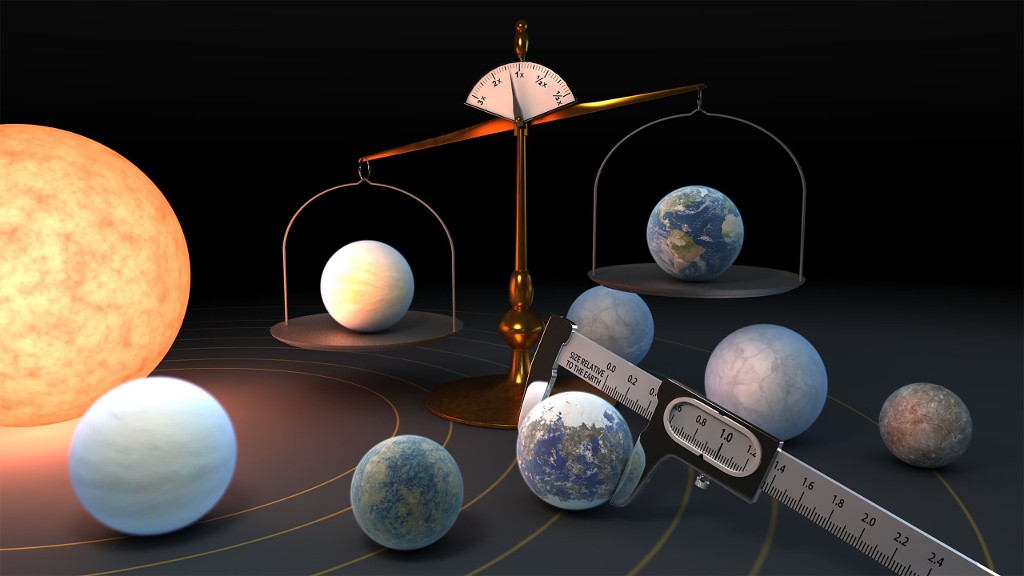
In more interesting exoplanet news that solves basically nothing, there is this fascinating system some of you may have heard of a time or two — TRAPPIST-1. This system was discovered in 2016 and made headlines for having seven planets, all similar in size to Earth, and quite a few of them in their star’s habitable zone. That made the system an excellent target for planetary scientists and SETI researchers alike.
The planetary scientists got tons of telescope time on Kepler and Spitzer in space as well as TRAPPIST and SPECULOOS on the ground. Hours and hours of observations were done, and now a new paper published in The Planetary Science Journal looks at the results surrounding the densities of these seven worlds.
Co-author and doctoral student Elsa Ducrot explains: Our new study has greatly improved the precision of the densities of the planets, the measurements obtained indicating very similar compositions for these seven worlds. This could mean that they contain roughly the same proportion of materials that make up most rocky planets, such as iron, oxygen, magnesium, and silicon, which make up our planet.
The density of all these worlds turned out to be about 8% less than Earth, and the team came up with three hypotheses on why that is. One hypothesis keeps the composition of the planets similar to Earth but with 21% iron instead of 32%, which means the core is iron-depleted and lower mass than Earth’s. The second hypothesis uses rust as the reason for a lower iron content; the planets have vastly more oxygen than Earth, and that oxygen has oxidized the iron all the way through to the core. It’s even possible that the density difference is a combination of the two hypotheses.
Finally, the third hypothesis gives the planets a water content of 5% of the total mass in the outer planets of TRAPPIST-1. These planets are far enough out to still have liquid water, while the inner three planets would either have lost their water completely due to the star’s heat or had Venus-like atmospheres to prevent the water vapor from escaping.
Co-author Caroline Dorn sums up the work: The TRAPPIST-1 system is fascinating because around this unique star we can learn about the diversity of rocky planets within a single system. And we can also learn more about a planet by studying its neighbors, so this system is perfect for that.
Clearly, more work needs to be done to understand this unusual system. Or any system.
More Information
University of Liège press release
NASA Jet Propulsion Laboratory press release
“Refining the Transit-timing and Photometric Analysis of TRAPPIST-1: Masses, Radii, Densities, Dynamics, and Ephemerides,” Eric Agol et al., 2021 January 22, The Planetary Science Journal




 Join the Crew!
Join the Crew!
 Escape Velocity Space News
Escape Velocity Space News
0 Comments